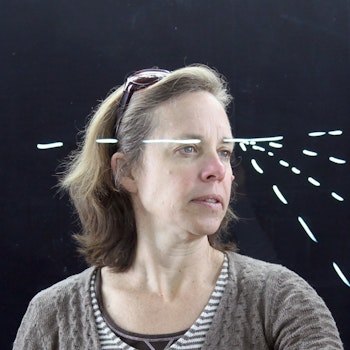An undergraduate textbook devoted exclusively to relationships between mathematics and art, Viewpoints is ideally suited for math-for-liberal-arts courses and mathematics courses for fine arts majors. The textbook contains a wide variety of classroom-tested activities and problems, a series of essays by contemporary artists written especially for the book, and a plethora of pedagogical and learning opportunities for instructors and students.
Viewpoints focuses on two mathematical areas: perspective related to drawing man-made forms and fractal geometry related to drawing natural forms. Investigating facets of the three-dimensional world in order to understand mathematical concepts behind the art, the textbook explores art topics including comic, anamorphic, and classical art, as well as photography, while presenting such mathematical ideas as proportion, ratio, self-similarity, exponents, and logarithms. Straightforward problems and rewarding solutions empower students to make accurate, sophisticated drawings. Personal essays and short biographies by contemporary artists are interspersed between chapters and are accompanied by images of their work. These fine artists—who include mathematicians and scientists—examine how mathematics influences their art. Accessible to students of all levels, Viewpoints encourages experimentation and collaboration, and captures the essence of artistic and mathematical creation and discovery.
- Classroom-tested activities and problem solving
- Accessible problems that move beyond regular art school curriculum
- Multiple solutions of varying difficulty and applicability
- Appropriate for students of all mathematics and art levels
- Original and exclusive essays by contemporary artists
- Forthcoming: Instructor’s manual (available only to teachers)
"The book goes a long way trying to convey to its audience—through both theory and practice—professional techniques that could not fail but empower students to make accurate, sophisticated drawings. The book presents an elegant fusion of mathematical ideas and practical aspects of fine art."—Cut the Knot
"[T]his is an excellent text that I will certainly consider using for a future class. The material on perspective is accessible, thorough and well-written, and the text is designed for a hands-on pedagogy that is well-suited to the intended audience. And as an elementary, but thorough, discussion of both the mathematics and practice of perspective drawing, it deserves a place in any collection of books on mathematics and the arts."—Blake Mellor, Journal of Mathematics and the Arts
"The writing is extremely clear, the material is fresh, and the many excellent diagrams clarify the ideas under discussion. The authors use relevant artwork to illustrate the mathematical principles. . . . The exercises are original and promote active learning. . . . This is an excellent work for academic curricula and an outstanding resource for self-study in mathematical perspective, fractals, and the relationship between art and mathematics."—Choice
"This is not a book to read passively and, indeed, you will want to read this book with a pencil in hand. The text is designed to be experienced first hand, sketching out examples whilst following the text, as well as doing the exercises at the end of each chapter that develop the material well. . . . Prerequisites for this book are a minimum, effectively being an understanding of basic coordinate geometry. I would recommend this book to anyone who is interested in the interplay between mathematics and art."—George Matthews, Mathematics Today
"This practical, hands-on, and significant book makes clear the connections between mathematics and art, and demonstrates why artists need to know mathematics. Viewpoints appeals to students' visual intuition and engages their imaginations in a fresh way."—Barbara E. Reynolds, SDS, coauthor of College Geometry: Using the Geometer's Sketchpad
"This entire book is a thing of beauty: the mathematics, the visual art, the writing, the exercises, and the organization. The authors' passion and excitement for their subject matter is apparent on every page. I am in awe."—Robert Bosch, Oberlin College
"The book's emphasis on a workshop approach is good and the authors offer rich insights and teaching tips. The inclusion of work by contemporary artists—and the discussion of the mathematics related to their work—is excellent. This will be a useful addition to the sparse literature on mathematics and art that is currently available for classroom use."—Doris Schattschneider, author of M. C. Escher: Visions of Symmetry
"Concentrating on perspective and fractal geometry's relationship to art, this well-organized book is distinct from others on the market. The mathematics is not sold to art students as an academic exercise, but as a practical solution to problems they encounter in their own artistic projects. I have no doubt there will be strong interest in this book."—Richard Taylor, University of Oregon



